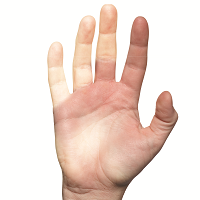Under the Control of Vibration at Work Regulations 2005, employers must provide health surveillance for employees if the risk assessment shows there is a risk to health from exposure to hand-arm vibration (HAV) from the use of hand-held power tools or from holding materials which vibrate while being processed by powered machines such as grinders.
Exposure to HAV can result in permanent and disabling loss of hand function, known as hand-arm vibration syndrome (HAVS), and health surveillance is designed to identify  anyone exposed or about to be exposed who may be at particular risk; identify any vibration-related problems in employees regularly exposed to HAV; and check the effectiveness of the control measures.
anyone exposed or about to be exposed who may be at particular risk; identify any vibration-related problems in employees regularly exposed to HAV; and check the effectiveness of the control measures.
Health surveillance must therefore be provided for employees who are:
- Likely to be regularly exposed to vibration above the action value of 2.5 m/s2 A(8) – the level at which specific measures must be taken to eliminate or reduce exposure
- Likely to be exposed occasionally above the action value and where the risk assessment identifies that the frequency and severity of vibration exposure may pose a risk to health
- Diagnosed with HAVS, even if exposure is below the action value.
The Health and Safety Executive (HSE) recommends adopting a tiered approach to surveillance as follows:
- Tier 1 – a short questionnaire which can be used as a baseline assessment for those taking up jobs which involve vibration exposure (example available on HSE’s website)
- Tier 2 – is a short questionnaire (an example of which can be downloaded from HSE’s vibration website (annual screening questionnaire) that you can issue once a year to employees exposed to vibration risks to check whether they need to be referred to Tier 3 for a HAVS health assessment
- Tier 3 – if a questionnaire suggests symptoms of HAVS, the employee should be assessed by a qualified person, such as an occupational health nurse, normally by means of a clinical questionnaire and examination (but not a full medical examination)
- Tier 4 – if relevant symptoms of HAVS are found at tier 3, a doctor qualified in occupational health should make a formal diagnosis and advise on the employee’s fitness for work
- Tier 5 – an optional test for HAVS, which may help the doctor to assess the individual’s fitness for work.
According to HSE, employers can keep costs down by appointing a ‘responsible person’ (who understands health surveillance and has been trained on the causes, effects and symptoms of HAVS) from their workforce or elsewhere to administer tiers 1 and 2, referring any problems to an occupational health professional or service provider.
If an employee is diagnosed with HAVS, the employer should act on the doctor’s advice on their continuing fitness for work with vibration – for example, by assigning them to alternative work or taking additional steps to reduce their exposure
If you need assistance in understanding the ways of recording exposure to vibration, managing exposure records, or establishing health surveillance procedures as a result of your risk assessment findings and or exposure information, then please contact C&C Consulting.










